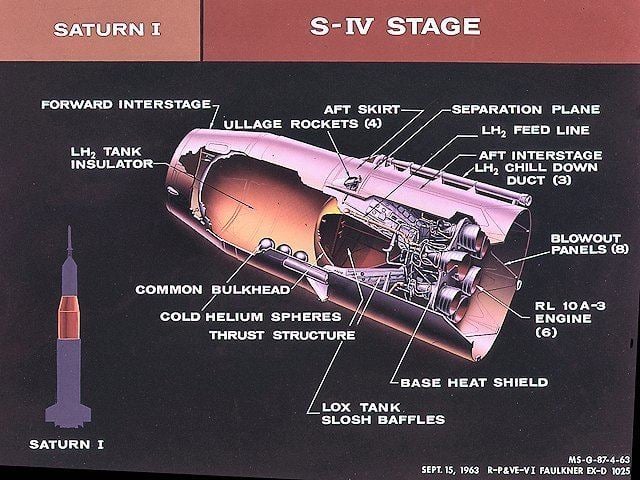Used on SLS Block 1B | Country of origin US Diameter 8.4 m (28 ft) | |
 | ||
Height not to exceed 18 m (60 ft) Propellant mass up to 129,000 kg (285,000 lb) | ||
The Exploration Upper Stage (EUS) is being developed as a large second stage for Block 1B and Block 2 of the Space Launch System (SLS), replacing Block 1's Interim Cryogenic Propulsion Stage. It will be powered by four RL10 engines burning LOX/LH2 to produce a total of 440 kN (99,000 lbf) thrust. As of February 2015 the SLS Block 1 is baselined to be able to bring 70 metric tons into low Earth orbit (LEO), while the SLS Block 1B is baselined at 105 metric tons. The EUS is expected to fly on the second launch of SLS scheduled for 2021.
Contents
Development
The Block I configuration of SLS will have the ability to insert 70 metric tons into low Earth orbit (LEO) using Shuttle-derived 5-segment Solid Rocket Boosters and a core stage powered by four RS-25 engines. Its second stage, the ICPS, will be considered part of the 70 t payload and on EM-1 it will be placed, along with the Orion crew capsule, on a 1,800 km by -93 km suborbital trajectory to ensure safe disposal of the core stage. At apogee, the ICPS will perform an insertion burn to raise the perigee and put itself and Orion into a stable orbit, and will later perform a translunar injection burn to send the uncrewed Orion capsule on a circumlunar excursion.
To improve on the 70 metric ton Block 1, NASA considered a Block 1A upgrade which would replace the Shuttle-heritage boosters with advanced solid or liquid boosters, and a Block 1B upgrade which would develop an improved second stage. This improved stage was originally named the Dual Use Upper Stage (DUUS, pronounced "duce") but was later renamed the Exploration Upper Stage (EUS) due to DUUS sounding like a profanity in Japanese.
Following concerns that the more powerful Block 1A boosters would have resulted in high acceleration during launch, which would have been unsuitable for the Orion crew vehicle and could have resulted in a costly redesign of the SLS core, NASA announced in 2014 that it would proceed with development of Block 1B with the EUS before advanced boosters. In April 2016 it was reported NASA has chosen to use a design based on four RL10 engines for the EUS.
Role & comparable stages
The EUS is to complete the SLS's ascent phase and then re-ignite to send its payload to destinations beyond low Earth orbit, similar in function to the 3rd stage on the Saturn V, the J-2 powered S-IVB but closer to the 2nd stage on the Saturn I, the S-IV in engine layout, as it contained a cluster of RL-10 engines and was likewise a 2nd stage on the vehicle stack.
The 2nd stage of the SLS Block IB, the EUS, powered by a cluster of four RL-10 engines will produce slightly more thrust than the Saturn I's six engined S-IV of the 1960s.
Prior to finalization of second stage options for the SLS Block IB, a more powerful Earth Departure Stage was under development, which would have been powered by up to three of the much more powerful J-2X engines. Technological development of the J-2X was expected to take considerably more time, so the EDS was dropped in favor of the EUS, which will use the already-developed RL10. According to NASA, the J-2X will be overpowered for the lunar and asteroid missions of the Block I and IB SLS; its development has been put on hold (though not abandoned) until stages capable of transferring heavy payloads to Mars are required (currently expected in the 2030s).
